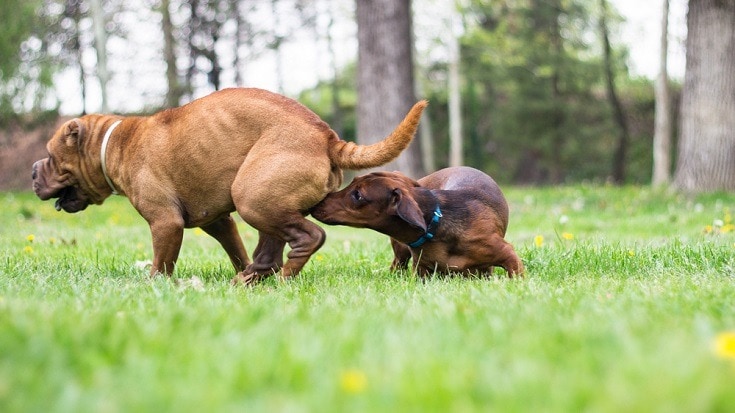12 Tips for Apartment Living with Dogs & Things to Consider
Updated on
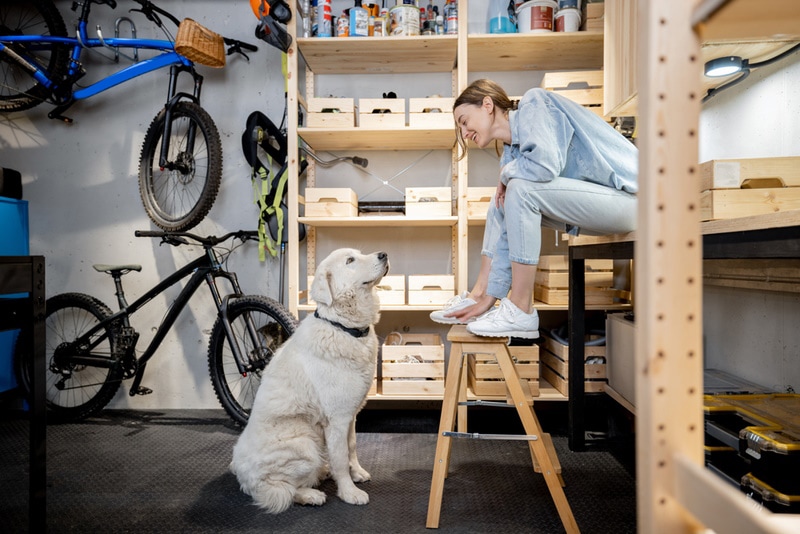
Living in an apartment with a dog is more challenging than one can imagine. Besides limited space, you don’t have a backyard or a big playing area to let your pet run around freely.
While that will be fine with a less energetic, small dog, what if you have a super active Labrador Retriever? It will be hard to provide them with enough mental and physical stimulation with all these limitations.
If you’re a beginner dog parent, you must choose an apartment-friendly breed or you will be paying a good sum of money in monthly doggy damage. So, always consider the dog’s size, activity levels, and barking frequency before bringing them to your apartment.
You can easily cope with all these limitations and spend a worry-free life with your puppy in your apartment. Here are 12 tips to help you out.
The 12 Tips for Apartment Living with Dogs
1. Choose the Right Breed
Not every dog can live in an apartment. Some breeds have higher exercise needs, while others bark a lot and cause trouble with your neighbors. A few breeds also don’t like too many people or other pets in their territory.
If you force your dog to live in an unfavorable condition, they will behave unusually and become destructive. So, before you bring any dog to your apartment, ensure they are ready to live in a limited space.
Evaluate the below things to know if a dog is the right choice for you or not:
- Physical Stimulation Needs – Every dog needs daily exercise, but their intensity differs from one breed to another. For example, Pugs are okay with one or two short walking sessions daily, but Border Collies will require longer durations to channel their high energy levels. So, do your research and choose a dog with easily manageable exercise requirements.
- Sensitivity to Unfavorable Conditions – Some dogs are sensitive to environmental changes, such as being left alone. In such situations, many dogs get anxious and behave destructively. So, you’d have to deal with them the right way to minimize the damage.
- All dog breeds need socialization in their puppyhood to stay happy and healthy. However, not all of them perceive the noises of the outside world the same way. Always check how much socialization a dog needs before bringing them to your apartment.
Invest sufficient time into researching every breed to find one that matches your lifestyle the most.
2. Consider the Apartment Size
Always adopt a dog who can live in your apartment regardless of what floor you are on. First-floor apartments are typically considered ideal for dogs, as you can easily take them outside for pooping or walking. The fewer stairs, the easier it will be. However, if you live on the top floor, ensure the apartment has a secure balcony to prevent accidents.
The last thing to focus on is the apartment’s noise policy. Dogs who bark a lot are usually prohibited by the complex for the comfort of renters. So, if your complex has any such rules, ensure you have a quiet breed.
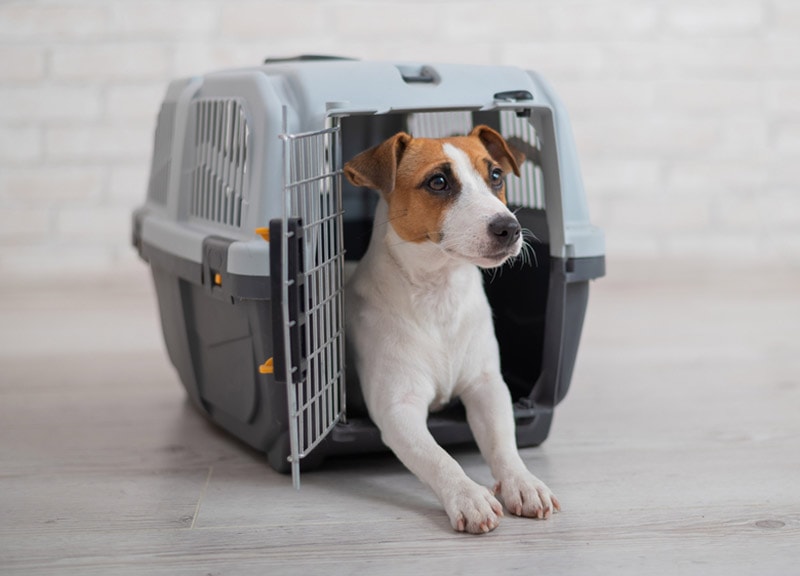
3. Make a Safe Space for Your Pup
Apartment living can be easier if your dog has enough space to sit, sleep, and walk around. So, the first thing you should do after adopting a dog or moving into an apartment is to dedicate a clean and safe area for your pet. This is the space where they can do whatever they want and feel safe and relaxed.
4. Set a Routine
Dogs prefer living on a routine with their human parents. Setting a schedule initially will help your pet perform their daily activities on time, even when you’re not around. That’s essential for their overall well-being and happiness.
To establish a schedule for your apartment dog, take them for toilet breaks, walking, playing, and training at the same time every day. That’s especially helpful in potty training your dog, saving you from unnecessary cleanups and vacuuming.
Walking is essential for all dog breeds. It keeps them healthy and prevents many health issues that may develop later on, such as obesity, diabetes, and osteoarthritis. So, take some time from your daily routine and take your pup out in the apartment building on a leash.
The ideal time for walking sessions can be in the early morning, afternoon, or evening—whatever suits your routine. If you think it will be hard to manage, you can contact a professional dog walker to do the job.
Remember, your dog’s schedule doesn’t have to be too strict. You’re only establishing it to give your pet an idea or structure of how their life should be. So, be flexible wherever you can.

5. Potty Train Your Pup as Early as Possible
As discussed, setting a routine significantly helps your pup in potty training. Imagine living on the 20th floor with a dog who needs to pee in the middle of the night every day. Even worse, what if your apartment doesn’t have an elevator? How will you take your pup out as soon as possible?
Many pet owners use indoor pee pads to accommodate their pup’s toilet needs in the apartments. While these tools are useful for puppies, you must untrain them and reteach them to pee outside on concrete or grass as they grow up. This will make potty training complicated for your pet. Therefore, the best way to potty train your apartment dog is to take them outside to pee or pooping from the beginning. Don’t forget to reward them for it.
However, your dog may trip in the elevator if you live on the top floor. Never punish or scold your dog in such situations. Instead, carry paper towels to prevent unnecessary mess around the complex.
6. Focus on their Training
An untrained dog won’t only cause additional troubles for you in the apartment but also outside it. Many complexes don’t accept untrained dogs, so get a breed that doesn’t behave too unusual in different conditions.
Training a dog can be difficult and time-consuming, but it depends on their breed. The general rule of thumb is to tell the dog who the boss is and what rules they must follow during the training. It will give your pet a clear idea of how to behave in the apartment.
When training your pup for apartment living, focus on the “place” command. It tells your dog to go somewhere (a crate, bed, or mat) and stay there until you ask them to move.

7. Ensure They Have Physical and Mental Stimulation
Dogs need exercises to stay physically and mentally stimulated, directly connected to their happiness and optimal health. Some breeds have low energy, while others have high energy levels.
You can accommodate both types of dogs in your apartment, but it would be wise to go for the one with low energy. These breeds don’t require extensive workout sessions; daily walks and indoor games are enough to let them channel out their energy.
Some examples of the best indoor dogs are a Pug, Shih Tzu, Maltese, Yorkshire Terrier, Pekingese, French Bulldog, and Chihuahua. However, they may bark quite a lot.
So, it’s your responsibility to inquire with the breeder about the dog’s exercise needs that you want to adopt. It will help you evaluate whether they will be the right choice for your apartment’s size and complex policies.
8. Keep Your Dog Entertained
If you live alone, your dog has no one to play with. So, you have no option but to make them happy with indoor and outdoor entertainment. Here is what you can try with your apartment dog:
- Contact a Daycare Service. If you spend your day outside the home, you can contact a doggy daycare service to keep your dog busy when you’re not around. You can also ask your friends or family for this purpose.
- Help Your Dog Socialize. Sometimes, it’s hard for your dog to live with humans all the time. Like we need other people, these pets also need other dogs to play with. So, if your apartment complex has other dog owners too, you can contact them and motivate your pup to befriend them. Make sure to supervise their first few interactions with other dogs until they are completely okay with each other.
- Make their Meals Fun. For indoor entertainment, you can make your dog’s mealtimes fun through food dispensary toys. They require the pup to complete the game to access the food or treat, keeping them busy with excellent mental stimulation. Alternatively, you can scatter the food crumbs around your house and ask your pup to find them—similar to hide and seek.
- Play Puzzles. Dogs love puzzles! You can lay around these games around your house to keep your pet occupied the entire day. They will be so busy that they won’t even know you have left them alone.
Boredom can make a dog depict destructive behavior, which can be a hassle for you, the complex staff, and the neighbors.
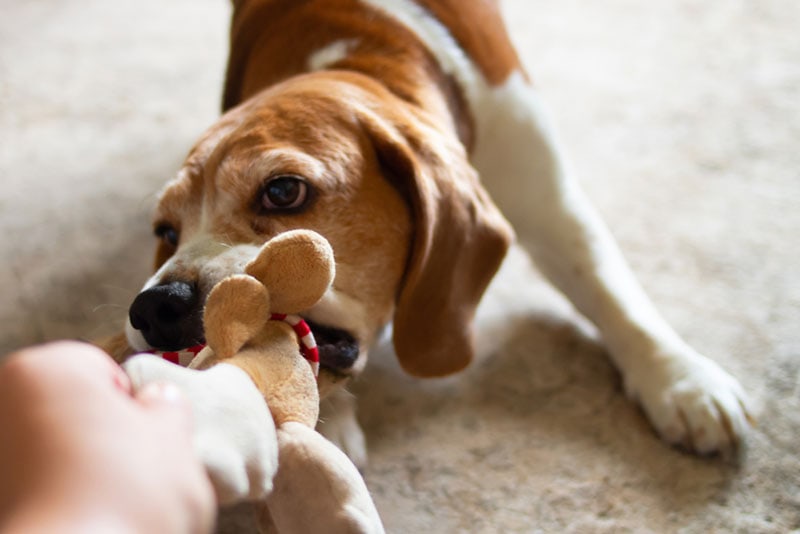
9. Teach Them How to Behave With Other Apartment Dogs
While we have emphasized dogships, it’s important to know that not all dogs like to be around other pets. It would be a downside, considering the close neighborhoods in apartment complexes.
If your Retriever gets into a fight with the neighbor Dachshund, the responsibility will solely lie on your shoulders. You must teach your pet how to socialize with other people and dogs.
The best way is to talk to your neighbor and find mutual ground to make the dogs accustomed to each other’s presence. If nothing works out, you both can speak to a trainer to establish a system that keeps the dogs apart.
Whatever method you choose, just be patient and gentle with your pup.
10. Learn How to Cope with Separation Anxiety
Dogs are susceptible to separation anxiety, especially those close to their owners. When they don’t find their human parents around for prolonged periods, they start behaving destructively, like chewing household items.
Some dogs also bark constantly, causing trouble for you with your neighbor. You may also have to pay additionally for those scratches on the door. Thus, it’s important to know how to tackle separation anxiety in your dog before bringing one to your apartment.
The best way to cope with this issue is to prevent it from happening. If you have adopted a little pup, give them sufficient time to learn how to be alone every day. Then, increase this duration gradually over time.
You can also exhaust your dog through different activities and walks the entire day. When they are tired, their mind won’t go toward destructive behavior. Instead, they will be relaxing in their special place.
But what if your adopted dog already has separation anxiety? In that case, you can contact a vet or a trainer to help your pet learn how to battle it. This condition is totally treatable, so there is nothing to worry about!

11. Deal With Barking
Dogs bark naturally, and you can do nothing to eliminate it. What you can do is find a dog who barks less than others. But if you have already adopted a pup with excessive barking, you should gently teach them how to tone it down.
For instance, if your pup barks in excitement whenever they see you, redirect their attention with a treat or a puzzle. This way, they will get occupied elsewhere, completely forgetting their excited barking. You can also seal the noise from going outside by playing the TV or white noise.
Bored dogs usually bark more because they have plenty of pent-up energy. So, don’t forget your pet’s daily walks and playing sessions.
12. Take Your Dog for Frequent Vet Checkups
Vet checkups are important no matter what dog breed you have or where you live. But since apartments have closely packed neighborhoods, there is a higher chance for your dog to get sick.
Thus, ensure you’re taking your dog for vet assessments frequently to identify the problem before it worsens. You should also vaccinate your pup to prevent damage if they bite someone.
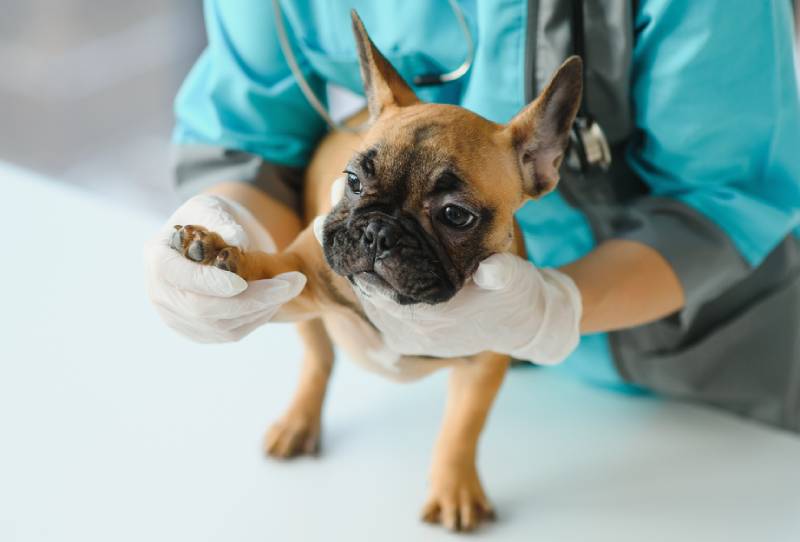
Important Things to Consider When Apartment Living with Dogs
The above tips made you confident about living in an apartment with a dog. However, things don’t end there—you also have to take care of some preventive measures for your pup’s safety.
Here are some things to keep in mind:
- Never leave your apartment’s windows open, especially if you live on higher floors. If your dog is adventurous or curious, it will pose a great hazard to their safety.
- If your puppy is still in their learning stage, don’t leave your puppy alone at home for extended periods. It may lead to separation anxiety or destructive behaviors.
- Show the dog that you’re the boss in the home from day one. This way, they will know their boundaries to live in an apartment.
- Keep your apartment decluttered to prevent accidental trips for your puppy.
- Never try to hide your dog when moving into an apartment complex. Many pet owners do so to avoid pet rents and end up feeling scared to take their dogs outside for playing, toilet breaks, and walks. It isn’t good for your pet’s health, the apartment’s condition, and your relationship with the building owner.
Final Thoughts
Apartment living with a dog can be a daunting experience if you’re becoming a pet parent for the first time. You need to consider many things, such as your dog’s breed, apartment size, the complex’s pet policies, the pup’s behavior, and their mental and physical needs.
You must also take into account your neighbor’s comfort. Dogs who bark a lot aren’t ideal for apartment living, as they can disturb your neighbor’s life. You’d also have to see if your dog can get along with other dogs in the complex.
Evaluating these factors will help you understand whether living in an apartment with the dog you want to adopt is a good idea. Hopefully, the above 12 tips will help you in this regard!
Featured Image Credit: RossHelen. Shutterstock




